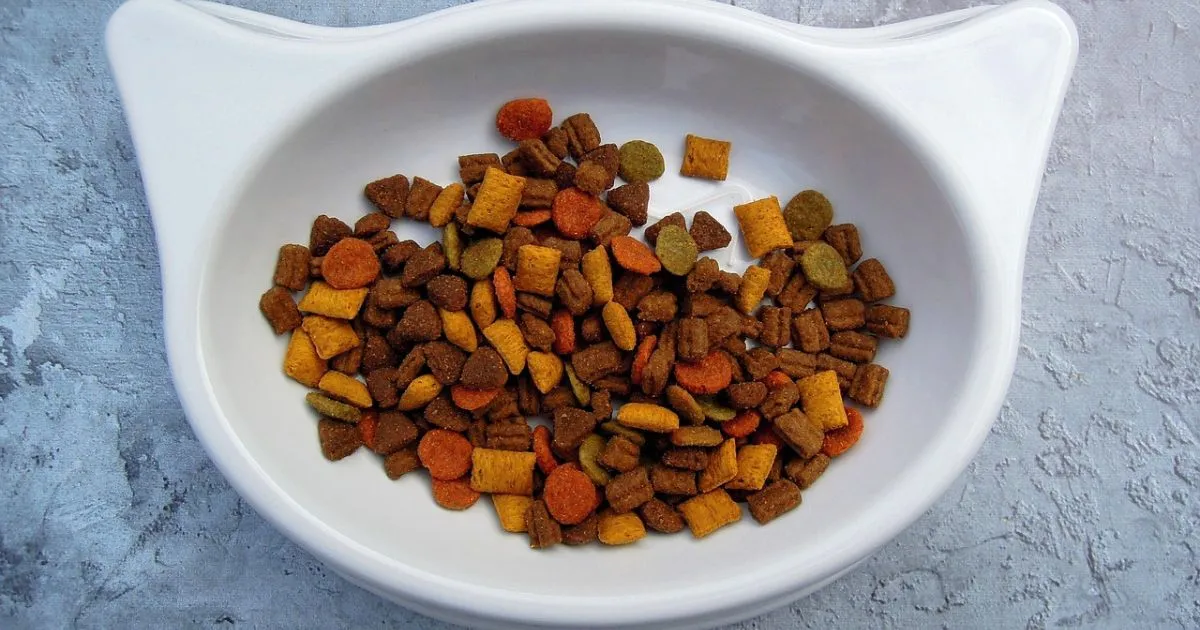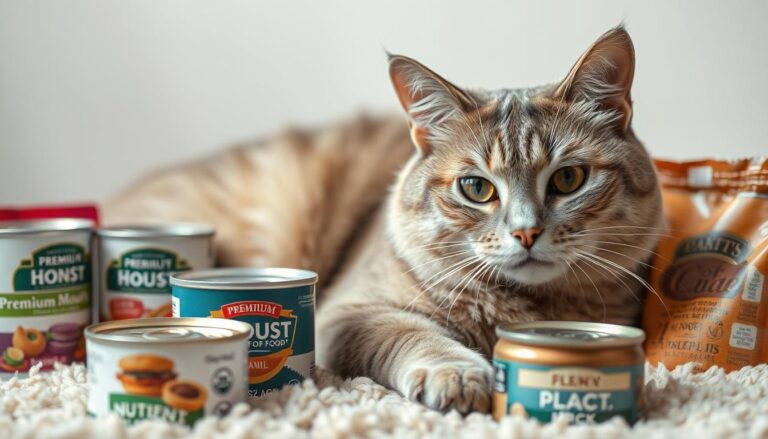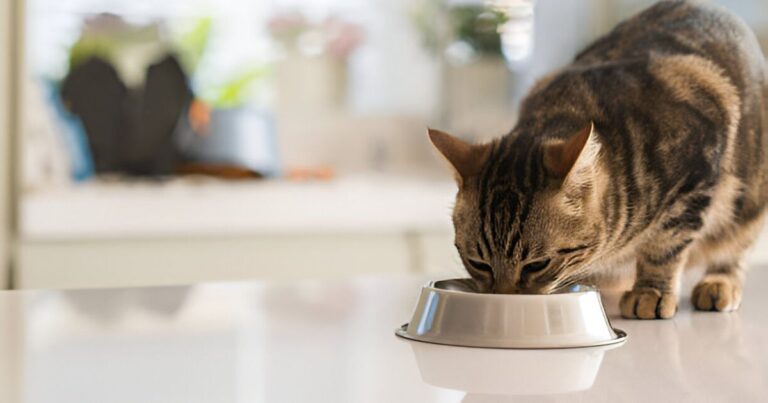How to Switch Cat Food Safely: A Step-by-Step Guide
Table of Contents
How to Switch Cat Food Safely: A Step-by-Step Guide
Changing your cat’s food can be challenging. Many pet owners find it hard to switch cat food without upsetting their cat’s stomach. It’s important to plan carefully and gradually to keep your cat healthy and happy.
Every cat is different and needs specific nutrients. Sudden changes in food can cause stomach problems, make them stop eating, or even harm their health. Knowing how to switch your cat’s food safely is key to their well-being.
This guide will show you the best way to introduce new food to your cat. You’ll learn about nutritional needs and how to smoothly transition your cat’s diet. Follow these steps to ensure a successful food switch.
Key Takeaways
- Gradual food transitions prevent digestive issues
- Monitor your cat’s reaction during diet changes
- Individual cats have unique dietary needs
- Consult a veterinarian before major diet modifications
- Patience is essential during food transition
Why Switching Cat Food Requires a Careful Approach
Changing your cat’s diet is not as simple as swapping out food bowls. Switching cat food demands a strategic and thoughtful process. This ensures your feline friend’s health and happiness. Cats are sensitive creatures with specific nutritional needs.
These needs can be easily disrupted by abrupt dietary changes.
Common Reasons for Dietary Shifts
Pet owners might consider how to transition cat food for various important reasons:
- Age-related nutritional requirements
- Managing specific health conditions
- Addressing food allergies or sensitivities
- Improving overall nutritional intake
- Responding to weight management needs
Potential Risks of Sudden Food Changes
Rapid switches in cat food can lead to significant digestive challenges. Your cat might experience:
- Severe gastrointestinal upset
- Vomiting or diarrhea
- Nutritional imbalances
- Complete food rejection
Health Benefits of a Proper Transition
A carefully managed food transition offers numerous advantages for your cat’s well-being. By gradually introducing new food, you support smooth digestion. This minimizes stress and helps your cat adapt to new nutritional profiles without compromising their health.
A gradual approach is always better than a sudden switch when it comes to your cat’s diet.
Understanding Your Cat’s Nutritional Needs Before the Switch
Switching cat food means knowing what your cat needs. Every cat is different, and their needs change as they grow. Your cat’s age, weight, how active they are, and their health all matter.
Before you start switching cat food, think about these important points:
- Age-specific nutritional requirements
- Current health status
- Weight management needs
- Activity level and energy demands
Vets say it’s smart to get a full check-up before changing food. Professional advice helps pick the right food for your cat. Look closely at the ingredients and nutrition facts when choosing new food.
Here’s a quick guide to important cat food nutrients:
| Nutrient | Kitten Needs | Adult Cat Needs | Senior Cat Needs |
|---|---|---|---|
| Protein | 35-50% | 25-40% | 30-45% |
| Fat | 15-25% | 10-20% | 10-20% |
| Carbohydrates | 5-10% | 5-15% | 5-10% |
Knowing how to switch cat food starts with understanding your cat’s needs. Every cat is unique, with different needs at different ages and health levels.
How to Switch Cat Food: The Gradual Transition Method
Switching your cat’s food needs patience and a careful plan. The gradual transition method helps avoid digestive problems. It ensures your cat gets used to the new food easily. Knowing how to switch cat food right can greatly improve your pet’s health and happiness.
The gradual transition is key for a smooth change. Vets suggest a three-week plan. This helps your cat’s digestive system adjust slowly, reducing stress and stomach issues.
Week One: The Initial Mix
For the first week, follow these steps:
- Start with 75% of the old food
- Mix in 25% of the new food
- Serve meals at consistent times
- Monitor your cat’s appetite and behavior
Week Two: Increasing New Food Portions
In the second week, adjust the mix:
- Change to a 50-50 mixture of old and new food
- Watch for any signs of digestive discomfort
- Maintain regular feeding schedule
- Keep fresh water available
Week Three: Finalizing the Transition
The final week is for the final change:
- Increase new food to 75% of the total meal
- Reduce old food to 25%
- Continue monitoring your cat’s health
- Be prepared to slow down if needed
Every cat is different. Some adjust fast, while others need more time. Always watch how your cat reacts to new food.
Signs Your Cat Is Adjusting Well to New Food
Switching cat food can be tricky. It’s important to know if your cat is adjusting well. Watching your cat closely and being patient is key.
Here are the signs your cat is doing well with the new food:
- Consistent appetite and regular meal consumption
- Stable energy levels throughout the day
- Normal stool consistency
- Maintained coat health and shine
- No significant behavioral changes
Watching how your cat acts and feels helps you see if they’re adjusting. A good sign is if they don’t have many tummy troubles and stay healthy overall.
| Positive Adjustment Indicators | What to Observe |
|---|---|
| Appetite | Eating regular portions without reluctance |
| Digestion | Consistent, formed stools without diarrhea |
| Energy | Maintaining usual activity levels |
| Coat Quality | Shiny, healthy appearance |
Remember, each cat is unique, and individual adaptation periods may vary. If you see problems with the new food, talk to your vet for help.
“A successful food transition is about patience, observation, and understanding your cat’s individual needs.” – Veterinary Nutrition Expert
Troubleshooting Common Issues During Food Transition
Switching cat food can be tricky for pet owners. Knowing how to switch cat food smoothly is crucial for your cat’s comfort and health. You might face challenges that need careful attention and smart management.
When you’re changing your cat’s diet, you might hit some bumps. Spotting these problems early can avoid health issues and make things easier for you and your cat.
Addressing Digestive Problems
Digestive issues often come up during food changes. Look out for signs like:
- Soft or loose stools
- Intermittent vomiting
- Reduced appetite
- Unusual gas or bloating
Here are some ways to tackle digestive worries:
- Slow down the transition
- Use probiotic supplements your vet recommends
- Make sure your cat drinks enough water
- Start with small amounts of new food
Managing Food Rejection
Some cats are picky about their food. Try these tips to get them to eat:
- Warm the new food a bit to make it smell better
- Add a little of their favorite treats
- Try different textures
- Keep feeding times the same
When to Consult Your Veterinarian
Some situations need a vet’s help:
| Symptoms | Recommended Action |
|---|---|
| Persistent diarrhea | See a vet right away |
| Significant weight loss | Get a full health check |
| Allergic reactions | Stop changing food, get vet advice |
“Watching your cat closely and getting vet advice is key to a smooth food change.” – Veterinary Nutrition Experts
Every cat is different. Being patient and careful will help you handle food changes well.
Best Practices for Maintaining a Healthy Diet Change
Learning how to transition cat food is just the start. Keeping your cat on the new diet needs constant care. This ensures your cat stays healthy and happy.
Having a regular feeding schedule is key. Make a meal plan that helps your cat adjust to the new food. This keeps them well and happy.
- Store new cat food in a cool, dry place
- Keep food in an airtight container to preserve freshness
- Check expiration dates regularly
- Monitor your cat’s weight and body condition
Regular vet visits are important for your cat’s health. Your vet can check if the new diet is right for your cat.
| Monitoring Aspect | Frequency | Purpose |
|---|---|---|
| Weight Check | Monthly | Ensure healthy weight maintenance |
| Nutritional Assessment | Every 6 months | Evaluate diet effectiveness |
| Blood Work | Annually | Check overall health indicators |
Flexibility is key when managing your cat’s diet. Be ready to make small changes as your cat grows or health changes. Keep up with cat nutrition and listen to your vet’s advice.
Transitioning cat food is a long-term effort. With patience, watching your cat, and taking care of them, they’ll stay healthy through good nutrition.
Conclusion
Switching cat food needs patience and careful attention. The gradual transition method helps your cat adjust to new food without digestive issues or stress. By following a step-by-step guide, you keep your cat’s nutritional health and well-being safe.
Every cat is different, and changing their food can be challenging. Watch how your cat reacts, eats, and digests during the change. Look for signs of acceptance or problems and adjust as needed. Your vet is a great help if you face ongoing issues.
Nutrition is key to your cat’s health. Changing their diet carefully can avoid problems and keep them healthy. Remember, consistency, observation, and gentle transitions are important when introducing new food.
With the right knowledge and a careful plan, you can smoothly change your cat’s diet. Trust the process, be patient, and focus on your cat’s comfort. Your careful attention will make the transition positive for your cat.
FAQ
How long does it typically take to switch my cat’s food?
Vets usually suggest a 7-10 day gradual switch. This slow pace helps your cat’s stomach adjust. It’s like adding more of the new food a little at a time.
What are the signs that my cat is not tolerating the new food well?
Look out for signs like vomiting, diarrhea, or not wanting to eat. Also, watch for lethargy or big changes in behavior. If these issues last more than 2 days, see your vet right away.
Can I switch my cat’s food suddenly?
No, sudden changes can upset your cat’s stomach. It might also lead to nutritional problems. Always switch slowly to keep your cat safe and comfortable.
How much of the new food should I mix with the old food initially?
Begin with 25% new food and 75% old food in the first week. Slowly add more new food over 7-10 days. This way, you’ll end up feeding only the new food.
What if my cat refuses to eat the new food?
Try these tips: – Warm the food a bit to make it smell better – Add a little wet food or treats – Make sure the food is fresh – Be patient and keep trying – If your cat still won’t eat, talk to your vet
Are there specific times when switching cat food is recommended?
Yes, switch food when: – Your cat grows up or gets older – They have health issues that need special food – You want to help them lose or gain weight – They have food allergies or sensitivities
How do I know if the new food is right for my cat?
Look for good signs like: – They have lots of energy – Their stools are firm and healthy – They’re at a good weight – Their coat is shiny – They eat well and their vet says they’re healthy
Can I switch between wet and dry cat food?
Yes, but do it slowly. Some cats like one better than the other. Watch how they react and adjust accordingly.







